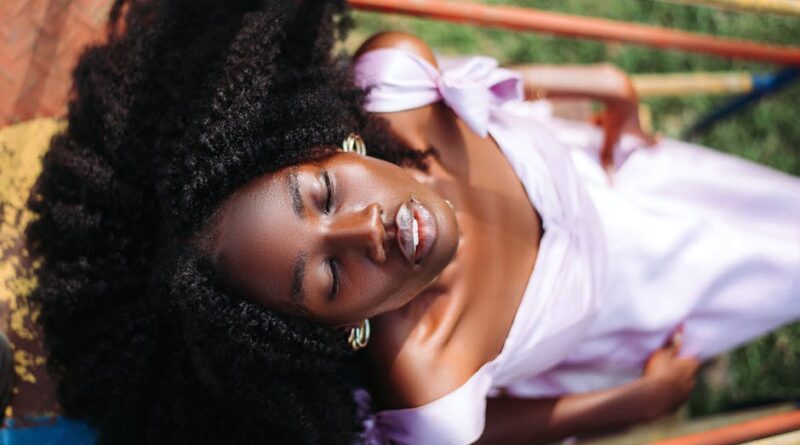Fashion for All Initiatives: Embracing Diversity and Inclusivity in the Fashion Industry
When we think of the fashion industry, we often envision glitzy runways, designer labels, and glamorous models. However, beyond the surface glamour lies a realm that is often overlooked – the realm of fashion for all initiatives. These initiatives aim to break down barriers, challenge stereotypes, and promote diversity and inclusivity within the fashion world. In this article, we will delve deep into the world of fashion for all initiatives, exploring their significance, impact, and the steps being taken to create a more inclusive industry.
The Evolution of Fashion for All Initiatives

By Adarsh mp via Pexels
The concept of fashion for all initiatives has its roots in the need for representation and inclusivity in the fashion world. Historically, the industry has been criticized for its lack of diversity, with limited representation of different body types, ethnicities, genders, and abilities. However, in recent years, there has been a growing movement towards inclusivity, driven by a desire for change and the recognition of the power of representation.
One of the key milestones in the evolution of fashion for all initiatives was the rise of the body positivity movement. This movement, which gained momentum in the late 2000s, emphasized the importance of accepting and celebrating bodies of all shapes and sizes. It challenged the traditional beauty standards perpetuated by the fashion industry and paved the way for greater inclusivity.
Another crucial development was the push for diversity in fashion campaigns and runway shows. Brands began to cast models of different ethnicities, ages, sizes, and abilities, reflecting a more inclusive vision of beauty. This shift towards diversity was not just a moral imperative but also a smart business move, as consumers increasingly demanded representation and authenticity from the brands they supported.

By Loc Dang via Pexels
The Impact of Fashion for All Initiatives
The impact of fashion for all initiatives extends far beyond the runway. By promoting diversity and inclusivity, these initiatives have the power to challenge stereotypes, empower marginalized communities, and shift societal perceptions of beauty and fashion. They send a powerful message that fashion is for everyone, regardless of their background, identity, or appearance.
One of the key impacts of fashion for all initiatives is the boost in self-confidence and self-esteem that they provide to individuals who have traditionally been marginalized or excluded by the fashion industry. Seeing models who look like them in campaigns and on runways can be incredibly empowering, validating their sense of self-worth and beauty.
Furthermore, fashion for all initiatives have the potential to shape societal norms and perceptions. By showcasing a diverse range of models and styles, they challenge traditional beauty standards and promote a more inclusive vision of fashion. This, in turn, can have a ripple effect on how individuals perceive themselves and others, fostering greater acceptance and appreciation of diversity.
Case Studies: Leading the Way in Inclusivity
Several brands and designers have emerged as champions of inclusivity and diversity, leading the way in the fashion industry. One such brand is Savage x Fenty, founded by singer and entrepreneur Rihanna. Known for its inclusive sizing and diverse casting, Savage x Fenty has been praised for its commitment to representing a wide range of body types and ethnicities.
Another key player in the world of fashion for all initiatives is Chromat, a swim and athletic wear brand that celebrates diversity and promotes body positivity. Chromat is known for its inclusive sizing, gender-neutral designs, and diverse casting, challenging traditional notions of beauty and fashion.
Additionally, labels like Tommy Hilfiger and ASOS have made strides towards inclusivity by launching adaptive clothing lines for individuals with disabilities. These lines feature innovative designs that cater to specific needs, such as magnetic closures, adjustable hems, and easy-access features, making fashion more accessible to all.

By Sherman Trotz via Pexels
The Future of Fashion for All Initiatives
As we look towards the future, the importance of fashion for all initiatives only continues to grow. With consumers becoming increasingly vocal about their desire for representation and inclusivity, brands are under pressure to adapt and evolve. The fashion industry is at a pivotal moment, where inclusivity is not just a trend but a fundamental value that drives creativity, innovation, and growth.
One of the key trends shaping the future of fashion for all initiatives is the rise of sustainable and ethical fashion. As consumers become more aware of the environmental and social impact of their clothing choices, there is a growing demand for sustainable, inclusive, and transparent fashion practices. Brands that prioritize sustainability, diversity, and inclusivity are likely to thrive in this evolving landscape.
Furthermore, technology is playing a crucial role in advancing inclusivity in fashion. From virtual fitting rooms to AI-driven sizing recommendations, technology has the power to revolutionize the way we shop for clothes and experience fashion. By harnessing the potential of technology, brands can create more personalized, inclusive, and accessible fashion experiences for all consumers.
Expert Opinions
We reached out to Dr. Kimberly Jenkins, a fashion historian and lecturer at Parsons School of Design, to get her perspective on the importance of fashion for all initiatives. According to Dr. Jenkins, “Fashion has the power to shape culture, influence perceptions, and drive social change. By embracing diversity and inclusivity, the fashion industry can lead the way in challenging stereotypes and promoting a more equitable society.”
Common Misconceptions
One common misconception about fashion for all initiatives is that they are limited to certain niche markets or styles. In reality, inclusivity is not a niche trend but a fundamental value that should be embraced by all brands and designers. By prioritizing diversity and representation, fashion can become more relevant, relatable, and impactful for all consumers.
Conclusion
To wrap things up, fashion for all initiatives are not just a passing trend but a transformative movement that is reshaping the fashion industry. By promoting diversity, inclusivity, and representation, these initiatives have the power to challenge stereotypes, empower marginalized communities, and shape societal perceptions of beauty and fashion. As we move towards a more inclusive future, it is crucial for brands and designers to embrace the values of diversity, equity, and inclusion, ensuring that fashion truly is for all.

By Jenny K. via Pexels




